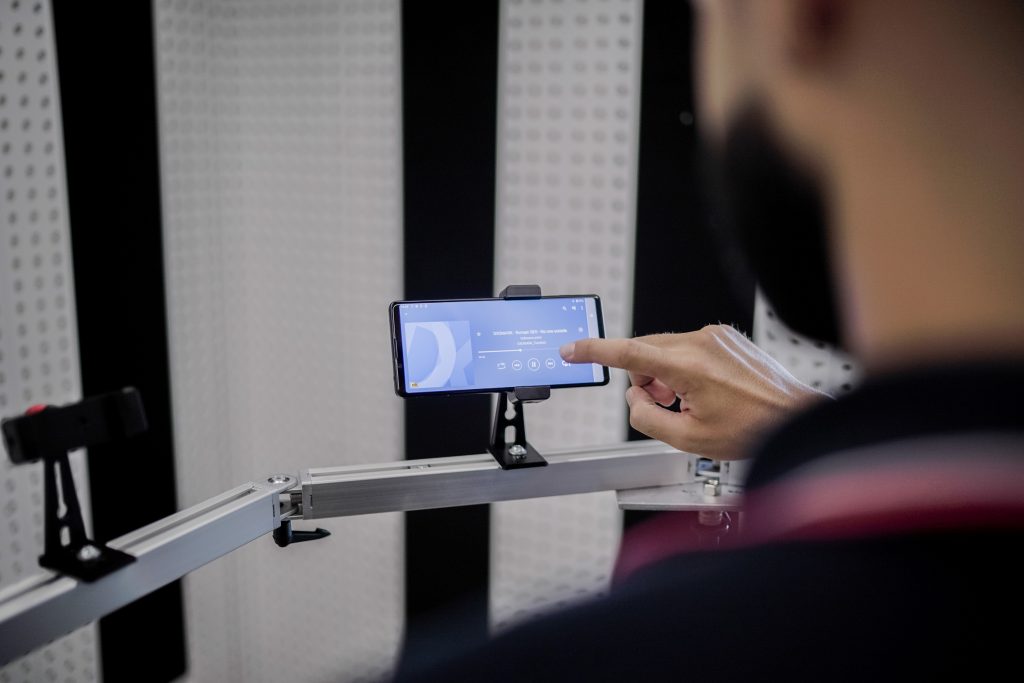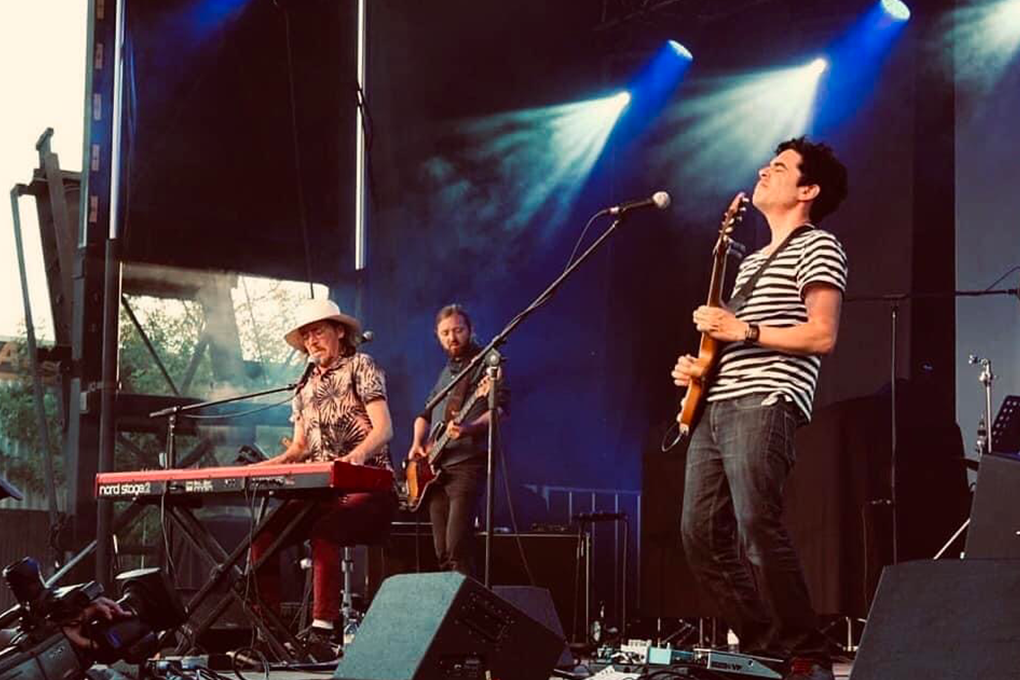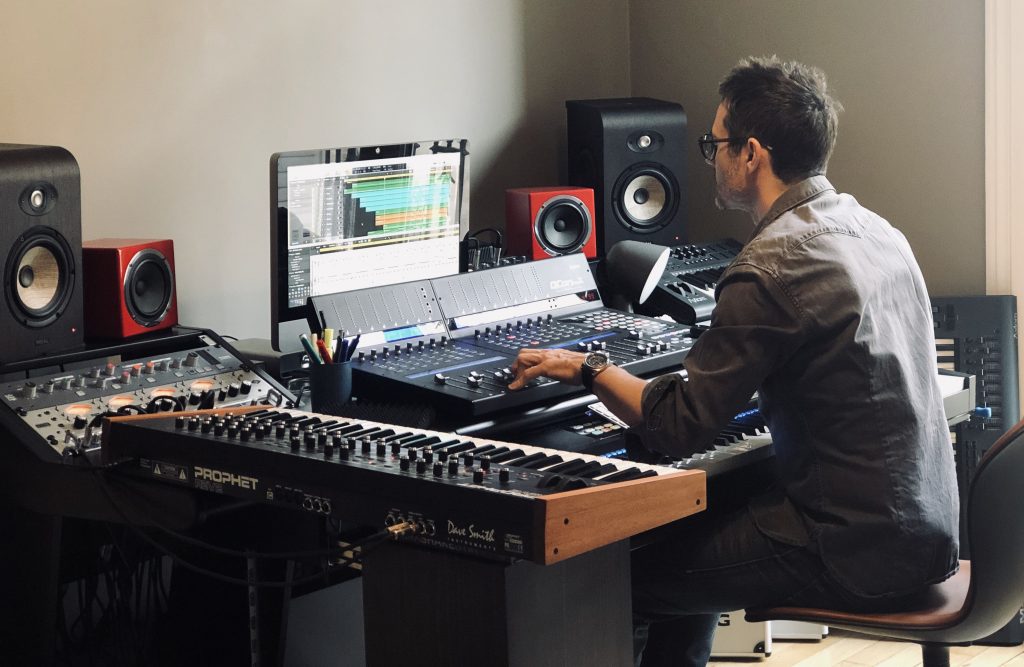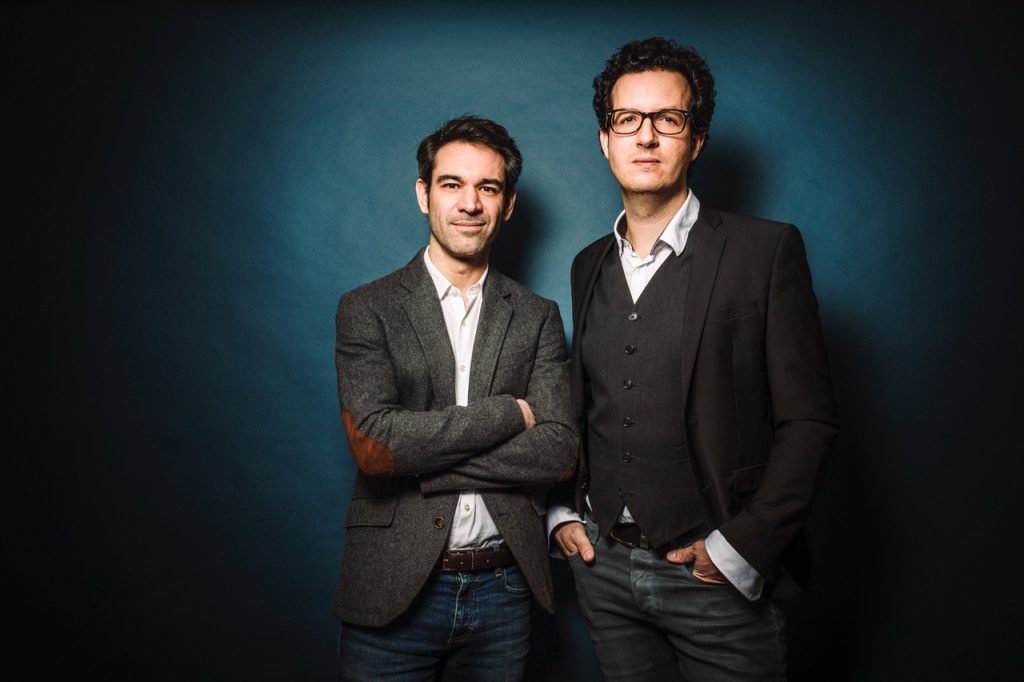If audio reviews are your jam, you’ve probably come across at some point during your internet surfing the famous “testing playlist” that many reviewers use to listen for specific audio cues. This particular set of songs helps to highlight dynamics, distortion, tonal balance, low-end extension, spatial wideness, and so on, when played back on speakers or headphones. Of course, DXOMARK’s Audio team also had its specific set of tracks for evaluating numerous sound attributes… but recently the team decided to take it to the next level.

When designing an audio protocol, testers often listen to a myriad of songs in order to determine which one will coincide with specific sound attributes. But what if we turned the situation around? What if, instead of looking for sound properties in already existing songs, and often missing a few, we asked musicians to produce perfectly tailored tracks containing all the sound attributes required by our protocol? Well, that’s exactly what we did.
In April, DXOMARK started looking for composers by posting a job description on LinkedIn. Our main criteria were the musicians’ efficiency, autonomy, and versatility— in short, their ability to compose, record, and mix tracks in a wide variety of genres. Even though LinkedIn might not be the first place a musician looks for work, we received over 150 responses! By the end of the month, we had finished the interviews and had chosen the composers to produce the 10 tracks we had in mind.
Their work enriches the DXOMARK Audio (and Speaker) protocols. So let’s introduce you to the four musicians behind DXOMARK’s track list.

Romain Seo grew up around Paris in the 1990s, slamming Metallica’s and Alice In Chains’ tunes on his guitar. In high school, he dove into the world of sampling, which eventually led to mixing gigs all over the globe, surfing on the French Touch superwave. These days, Seo focuses on My Dear, a band he’s formed with his wife Blanche Cabanel, and has specialized in composing music for television, web, and commercials, enthusiastically blending in all his musical influences.
For DXOMARK, he created and produced four tracks, which were recorded and mixed in the south of France, where Seo and his family spent several months during the spring Covid-19 lockdown. The TR 909 snare drum à la Ravel’s Bolero in “The Forest” is very useful for evaluating wideness and bass precision. The deep kick and bass in “No One Outside” are particularly appropriate for highlighting distortion. In addition, vocals stand out in the mix, which is very effective for assessing the balance between left and right channels.
While Cabanel performed the vocals on those first two tracks, the C-Pop track “Push the Limit“ had to feature a Chinese voice. Through social networks, Seo came across the Urban Pop singer/lyricist Beilei Ye, who remotely wrote the lyrics and recorded the vocals for this track. Thanks to its precise snare hits, its predominant vocals, and its main synthesizer, “Push the Limit” is particularly useful for evaluating midrange frequencies, distance, attack, and global tonal balance.
For the last track, called “Switch Town,” Seo recorded his “flow” on the demo before sending it to a Canadian rapper found via the freelance service Fiverr. The strong snare drum and crisp hi-hat cymbal offer a perfect setting to listen for attack and punch. As in “Push the Limit,” the track’s dominant vocals and main synthesizer are useful for evaluating midrange frequencies.

Just like Seo, Raphaël D’Amours also learned the ropes — or the strings — by playing along with the Big Four of Thrash. After touring the world as a professional guitarist for a couple of years, the Canadian musician now focuses on songwriting and production. “After listening to his work, we thought Raphaël D’Amours was the perfect composer to produce the Steely Dan-like song our playlist needed,” said Justin Bacle, head of Audio at DXOMARK. Just like Seo, D’Amours sent no mock-ups prior to the deadline, delivering the fully recorded, mixed, and mastered tracks to DXOMARK’s Audio team, who in turn merely requested a few surgical touch-ups.
For “Cold Nights,” the composer gathered his musicians in the Studio Reservoir in Montreal. Apart from the guitars, which D’Amours had previously played and recorded, the whole band played together live. Furthermore, the bass, drums, and keyboards you hear aren’t a mashed-up edit of a myriad of recordings, it is actually one single, continuous take. The following day, the vocal tracks were remotely recorded and sent to DXOMARK, and that was it!
The Audio team’s requirements were focused on crisp and spatialized guitars, precise percussions, and prominent vocals. More globally, the whole track delivers proper audio cues for evaluating almost all sound attributes, ranging from timbre to dynamics, including spectral and temporal artifacts, spatial properties, and many more.
Inspired by Brian Eno, whose musical universe served as a reference, the pianist Alexis Dumais played on D’Amours’s second composition, hence the name “AlexEno.” With this sharp (acoustically recorded) piano rendering, DXOMARK’s Audio team has almost razor-like transient sounds to evaluate attack, as well as long notes (kalimba, bass, Moog) to create a cozy atmosphere.

While David Starck entered musicianship through the classical door, from starting the piano at the age of six all the way to studying Counterpoint at the Schola Cantorum in Paris, he quickly began exploring modern genres. At the age of 12, he was already playing in a rock band, and after graduating from the Parisian Jazz school CIM, the pianist left the Old Continent for new melodious adventures. He lived for 10 years in New York, where he sharpened his jazz knowledge alongside mentors like Barry Harris, then toured Asia for half a decade. The multi-genre instrumentalist and composer is now established in Paris, where he successfully scores a multitude of movies and American TV shows. In the spring, he came across DXOMARK’s job offer through his mailbox, when LinkedIn notified him he had a 95% match with a job offer.
Starck produced all of his tracks on Logic Pro, which was also the software used by the first two composers. The raggaeton track “Sin Volver” is mainly useful for treble (sharp guitar and high-pitched piano) and tonal balance evaluation, thanks to its hook (riff or motif), evenly distributed across the whole frequency spectrum. The vocals, however, were not recorded for this track: the composer built the song around a sample from the Ueberschall library.
The vocals for “Be Alone” also came from the same sample library. With its strong bass and heavy compression, this EDM track is capable of pushing any speaker to its very limits. Extremely efficient for troubleshooting spectral and temporal artifacts, it is also useful for evaluating treble frequencies.
As for the witty “Petit Jean,” it offers an excellent dynamic range typical of classical music. Throughout the orchestra, the mix focuses on strings, tambourine, and piano— relevant instruments for treble and tonal balance evaluation.

This last track is the only one that was not specifically commissioned by DXOMARK for our testing playlist. It was, in fact, a jazz improvisation captured during a recording session in the Libretto Studios for an upcoming album by the band Happy Hours with Vincent Touchard and Stephen Binet.
The Audio team came across that recording and found many audio cues that were particularly relevant for the Audio protocol: the saxophone and the piano are both used for the perceptual evaluation of midrange frequencies, the cymbals for attack, and the soft bass easily highlights resonances in the low-end frequencies. Just like “Cold Nights,” what you hear is a single take in which all the instrumentalists play at the same time, in the same room!
Credits
“The Forest”
Composition, arrangements, all instruments, mixing, lyrics: Romain Seo
Vocals: Blanche Cabanel
“No One Outside”
Composition, arrangements, all instruments, mixing, lyrics: Romain Seo
Vocals: Blanche Cabanel
“Push the Limit”
Composition, arrangements, all instruments, mixing: Romain Seo
Lyrics: Beilei Ye
Vocals: Beilei Ye
“Switch Town”
Composition, arrangements, all instruments, mixing, lyrics: Romain Seo
Nathaniel Hamilton (Northside Nate)
“Cold Nights”
Composition, arrangements: Raphaël D’Amours
Vocals: Alan Prater
Guitar: Raphaël D’Amours
Wurlitzer electric piano: Alexis Dumais
Bass: Marie-Anne Arsenault
Drums: Maxime Lalanne
Mixing and mastering: David Laurendeau
“AlexEno”
Composition, arrangements: Raphaël D’Amours
Piano: Alexis Dumais
Moog: Alexis Dumais
Double bass: Alexis Dumais
Kalimba: Raphaël D’Amours
Mixing and mastering: David Laurendeau
“Sin Volver”
Composition, arrangements, all instruments except bass: David Starck
Bass: Olivier Berthelot
Vocals: Ueberschall sample
Mixing and mastering: DXOMARK Audio team
“Be Alone”
Composition, arrangements, all instruments: David Starck
Vocals: Ueberschall sample
Mixing and mastering: DXOMARK Audio team
“Petit Jean”
Composition, arrangements, all instruments: David Starck
Mixing and mastering: DXOMARK Audio team
“Jazz improvisation”
Performed by the band Happy Hours
Recording and mixing: Erwan Boulay
Mastering: Raphaël Jonin
Behind the scenes
• In the Reservoir studios, there were over 80 snares to choose from!
• On “Cold Nights,” the singer used to be one of Michael Jackson’s backing singers. You can check out his excellent funk band The Brooks.
• A few days before starting production, Seo took a bike ride and broke an arm. He thus composed, performed and mixed all four songs with his right arm in a cast!
• In 2005, Seo formed a rock band called Amen Birdmen, which went on to perform for over a decade, and opened for the band Shaka Ponk.
• During his years in the Philippines, Starck was part of the band SinoSikat (keyboards and musical arrangements), which won the local music award. Erykah Badu lovers, you might enjoy this!



DXOMARK encourages its readers to share comments on the articles. To read or post comments, Disqus cookies are required. Change your Cookies Preferences and read more about our Comment Policy.